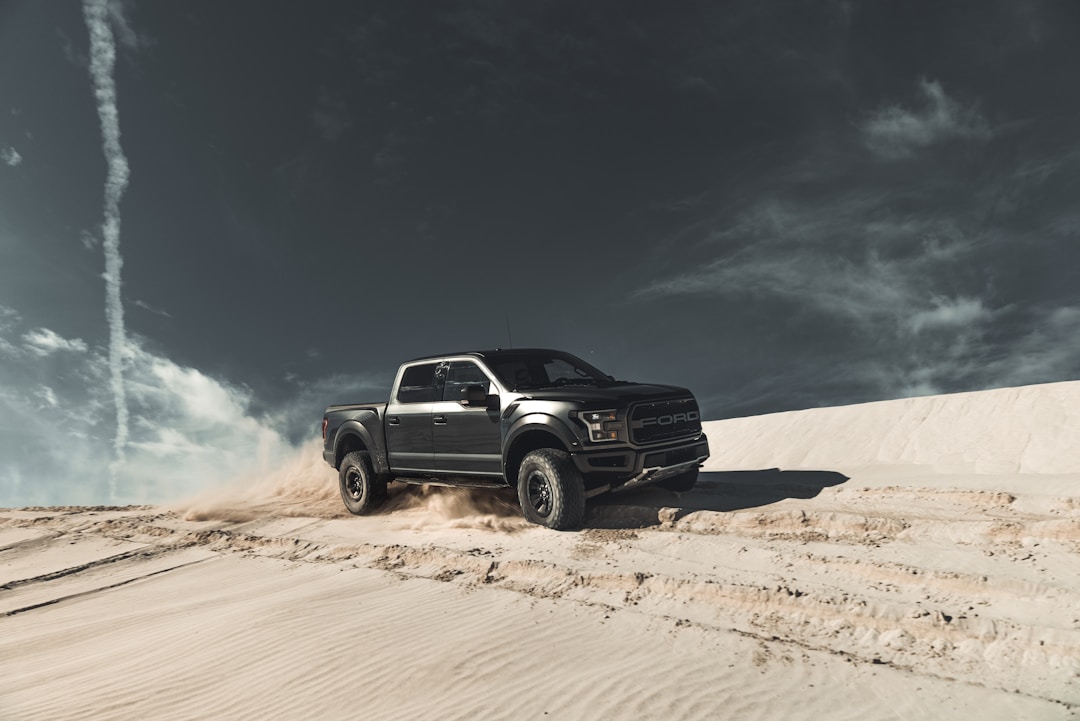Owning a truck comes with a great amount of responsibility, especially when it comes to ensuring its safety and longevity. The elements, such as sun, rain, snow, and even dust, can wreak havoc on your truck’s exterior and interior. In this article, we will discuss various techniques for protecting your truck, including using a high-quality cover for trucks to ensure your prized possession is safe and secure. Keep reading to learn effective ways to maintain your truck’s pristine condition against harsh weather conditions and environmental factors.
Understanding the Effects of Weather on Your Truck
Weather conditions can significantly impact your truck’s exterior and mechanical performance. Prolonged exposure to sunlight can cause the paint to fade, crack, and peel, while winter conditions can lead to rust formation and corrosion. Similarly, rainwater can collect in small crevices and cause further damage to the vehicle’s body and components.
Understanding these effects is crucial for taking precautionary measures and ensuring your vehicle’s durability. Keep an eye on weather forecasts and monitor seasonal changes to adapt your maintenance routine accordingly. Regularly inspecting your truck for any visible signs of wear and tear will help you address emerging issues in a timely manner.
Implementing proper protection methods, like using a high-quality truck cover, will substantially reduce the impact of weather on your truck’s appearance and performance. Additionally, undertaking routine maintenance checks and timely repairs will keep your truck in top-notch condition.
Investing in a High-Quality Truck Cover
One of the best ways to protect your truck from the elements is by investing in a high-quality cover. A good truck cover will shield your vehicle from direct sunlight, rain, snow, and dust particles. These covers are designed with water-resistant materials to prevent water infiltration and protect the truck from staining mildew, and rust formation.
Some truck covers are also designed with UV-resistant materials to reflect harmful ultraviolet rays, protecting your vehicle’s paint and interior upholstery from fading and cracking. A well-ventilated cover will allow moisture to escape, preventing dampness and mold growth in your truck’s interior.
UV rays are a type of electromagnetic radiation that comes from the sun and can cause significant damage to your car’s paint. These rays can break down the chemical bonds in the paint’s molecules, causing it to fade, peel, and crack over time. When UV rays come into contact with the clear coat on your car, they heat the surface, causing it to expand. As the surface cools and contracts, it becomes more brittle, making it more susceptible to cracking and fading.
Make sure to choose a truck cover that fits your vehicle perfectly, providing thorough protection against the elements. Consider investing in a custom-fit cover tailored to your truck’s dimensions, as these covers ensure maximum coverage and protection for your vehicle.
Regular Washing and Waxing
Regularly washing and waxing your truck is essential in protecting it from the elements. Washing your truck removes dirt, grime, and contaminants that can damage the paint, cause rust, and affect the overall performance of the vehicle. Make sure to use gentle, pH-balanced car wash soap and a soft sponge or cloth to avoid scratching the paint.
After washing, always dry your truck thoroughly with a microfiber towel to avoid water spots and mineral deposits. Waxing your truck forms a protective barrier on the paint, shielding it from UV rays, pollutants, and moisture. Make sure to wax your truck at least twice a year, or more frequently depending on the harshness of the weather conditions in your area.
Do not forget to clean the undercarriage of your truck, as this area is prone to rust and corrosion. Spray the undercarriage with water regularly to remove dirt and debris, preventing buildup and damage over time.
Maintaining Your Truck’s Interior
Protecting your truck’s interior from the elements is as important as its exterior. Sunlight can cause dashboard materials to crack and fade, and water ingress due to rain can damage upholstery and electronics and create an unpleasant odor. Using a sunshade on your windshield when parked will reduce interior heat buildup and shield the dashboard, steering wheel, and upholstery from direct sunlight.
Swap out fabric seat covers with waterproof and UV-resistant versions, or consider adding a protective coating to leather seats to prevent sun damage and cracking. Regularly cleaning the interior, vacuuming the carpets, and wiping down the dashboard and electronics will help maintain a pleasant and well-kept space inside your truck.
Inspect door seals and window seals to ensure they’re in good condition and replace them if necessary. Adding weatherstripping to doors, windows, and the rear cab window can also help keep moisture, wind, and dust out of your truck’s interior.
Parking in a Sheltered Area
Parking your truck in a sheltered area, such as a garage or under an awning, can significantly reduce its exposure to the elements. Sheltered parking protects your vehicle from rain, snow, and sun, lessening the likelihood of paint damage, rust formation, and interior deterioration.
If a permanent sheltered area is not available, consider installing a portable carport or temporary garage for your truck. These structures can protect your vehicle from various weather conditions and prolong its lifespan. Additionally, even if you already use a high-quality truck cover, parking your truck in a sheltered area will provide an extra layer of protection.
When sheltered parking is not available, try to park in areas with natural shade, such as under a tree. However, be aware of potential hazards like bird droppings and tree sap, which can harm your truck’s paint. Regular cleaning will help prevent such issues from causing lasting damage.
Protecting Your Truck’s Electronics
The electronics in your truck, such as the navigation system, audio equipment, and power windows, can also be affected by harsh weather conditions. Extreme heat or cold can cause physical damage to electronic components and negatively impact their performance. Moreover, moisture seeping into the electronic systems can result in short circuits and potential electrical fires.
To protect your truck’s electronics, make sure all doors and windows are closed properly, and examine seals for signs of damage. Periodically inspect electrical connections and wiring for any signs of corrosion or wear, and have a professional mechanic address any concerns promptly.
Prevent moisture buildup in your truck’s interior by using a dehumidifier or moisture-absorbing packets, and ensure proper ventilation by occasionally opening windows or using your vehicle’s air conditioning system in fresh air mode.
Preparing Your Truck for Seasonal Changes
As the seasons change, so do the environmental factors that can affect your truck. Preparing your truck for seasonal changes is crucial in maintaining its condition and ensuring a safe and comfortable driving experience.
During summer, make sure your air conditioning system is functioning well, and ensure the engine coolant level is appropriate to prevent overheating. Conversely, during winter, pay close attention to the functionality of your truck’s heating system and take steps to prevent the formation of rust and corrosion caused by road salt and moisture.
In the fall, be cautious of falling leaves that can block air vents and collect in your truck’s undercarriage, leading to potential issues. Finally, in spring, give your truck a thorough cleaning and inspection to assess any damage caused by harsh winter weather, making necessary repairs before damages worsen.
Protecting your truck from the elements is an essential aspect of truck ownership. Regular maintenance, investing in a high-quality truck cover, and taking precautionary measures during seasonal changes will ensure your truck remains in excellent condition and serves you well.












